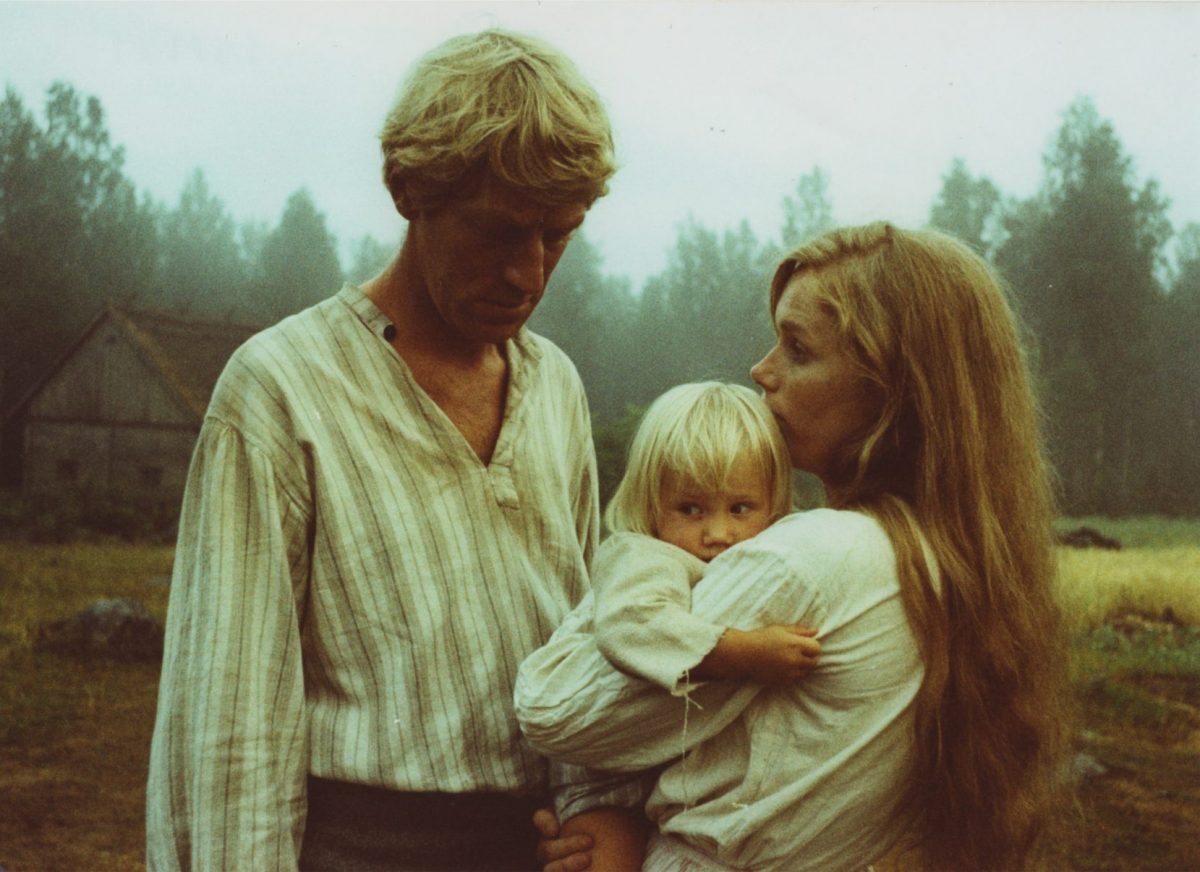by Pauline Kael
Like Sounder, The Emigrants has reverberations. Some recent very well-made films don’t—Fat City, for example, which is beautifully directed around the edges but mechanical, and hollow at the center. I watched all those losers losing and I didn’t know why they were losing or why I was watching them; their losing wasn’t even a metaphor, it was just a plot necessity for the sake of a faded idea of classic structure. Even Deliverance, powerful and remarkable as it is—and it’s the most impressive American movie I saw this past summer—is sterile in its conception. There isn’t enough life in the characters to connect with, and so it’s a self-contained experience. You’re held by the director’s control, and the picture has a wallop, but you don’t take anything away. When you come out, the movie is really over, because there’s no counterpoint, nothing else going on in it. These are cool, soulless exercises—directors’ demonstrations of what they can do with the given material. But you know why you’re watching Sounder and The Emigrants.
Jan Troell’s broad-backed nature epic on the mid-nineteenth-century Swedish emigration to this country, which was shot in Sweden and here, tells the story of why and how Swedes became Americans. It covers the grim farm life, under a hierarchy of masters, that drove a group to emigrate, the brutal sea voyage, and then the landing of the survivors and their trip by train, by Mississippi paddle boat, and on foot until they staked out a claim in Minnesota. (A sequel, The Settlers, which Warners promises to import in the near future, deals with their fates in the new land.) Hollywood movies have often touched on the subject, but only touched — they imposed the ploys of popular melodrama, and made the migration incidental. Even America America inflated the gigantic theme with a ragbag collection of Christ and Judas figures. The Emigrants goes at the subject directly—bluntly, unseductively—finding its drama in that unprecedented migration.
Initially, for a long stretch, the film gave me some trouble: those crabbed, morose Swedes. They seemed to be living in the Dark Ages. They were so monotonously stolid they didn’t even talk to each other; the closeups of sealed faces made me impatient, and I began to think the Swedes should leave Sweden just to get away from the other Swedes (though, of course, when they got here, they stuck pretty close together). The contrast between the Swedish response to adversity and the tenderness and humor of the family life in Sounder could not be more extreme. The Swedish family life is cheerless, and the thick, doomy Protestantism austere. I once had a conversation, with a man I know, about whether there really were people we might be uneasy to see our children marry—were there cultures that felt so alien to us that we could never quite be in tune with a person from them? I said maybe someone from India, and he said a Swede. After due reflection on The Emigrants, I think I agree with him. It was the experience of flight to a dreamland the characters took part in that began to catch me up, and it wasn’t until they were packed together on the ship, a degraded, frightened bunch of people trying to hang on to some trace of their identities, that they began to matter as individuals and I wanted to know what was going to happen to them. However, as the picture develops we can forget how temperamentally alien they are to us because of something else that’s alien, something that Swedish artists often have: earth spirit, earth poetry.
Troell’s massive visual exuberance shows him to be the least blasé of the new directors; he’s a nature poet telling stories. He photographs his own movies, in addition to directing and editing them and collaborating on the writing; in the whole history of the screen there have been only a handful of directors who actually shot their own movies, and no other cinematographer-director has ever undertaken a work of this sweep. As the first major cinematographer-director, he brings a new visual and thematic unity to fiction films. He seems to owe very little to traditional moviemaking and (unlike Bergman) almost nothing to the theater. One gets the feeling that he didn’t even have to break away, that—and this may be possible because of how films are produced in Sweden—he developed in his own way, out of photography. Although the leading characters are played by Liv Ullmann and Max von Sydow, it’s almost impossible to discuss their performances; there don’t seem to be any performances. Ullmann and von Sydow move in and out of frame, courting, marrying, having children. They belong to the region and the life there, and after a while you forget that this is the same Liv Ullmann you’ve seen in the Bergman films. (It’s maybe a little harder to forget you’ve seen von Sydow; that long-jawed face is so familiarly mulish, and, besides, he’s stuck with lines that are translated for us as “It bodes ill for the crops.”) Troell’s celebration of air and trees and water includes the people with the land, and, despite the initial human gloom, the sensual passion of his imagery incorporates those people. American directors who love the outdoors usually love vast spaces: their characters move through them; nature is used for beautiful backgrounds. Troell loves nature for itself—nature, weather, changes of light. The film provides what those great descriptive passages in novels used to provide — a sense of what the natural environment did to the characters. The shipboard ordeals are devastating because, suddenly, we see those people cut off from everything that has formed them, trapped and sick, turned into fools — greenhorns — and we begin to feel the whack and terror of that culture shock experienced by first-generation Americans. The picture, adapted from a group of recent novels by Vilhelm Moberg, has a heavyset sensibility. That may sound awful—I must admit that I’m somewhat repelled by the sound of it myself — but movies are usually so piddling that The Emigrants fills a need. I came to respect the heavy cut of Troell’s mind, and, after an hour, to find the sheer bulk of the film awesome.
Troell composes every shot as if it were to be his last, but at the same time he expands our notions of what screen lyricism is, because he’s solemn and yet lyrical, disciplined yet rapturous. He will not be hurried. He gives the shimmer of the sun on sails equal weight with the lice and scurvy belowdecks, the redness of a paddle wheel equal weight with a misplaced child; he pauses to frame a magic image of the lighted riverboat at night. The imagery is intense, naturally lighted but frequently soaked in bright, deep color. Troell has a ravening appetite; it almost seems as if he loved nature so much he wanted to plunder it all. You wonder what can be left for him after this picture and its sequel—over six hours altogether. Warners apparently decided that we wouldn’t have the time for his unhurried view, however, and he had to cut The Emigrants, which ran a hundred and ninety minutes in Sweden, to a hundred and fifty minutes. Perhaps that explains our slight confusion about what route the group takes; we’re not always sure how they’re getting to Minnesota. (There are also a few minor eccentricities, probably due to unfamiliarity with certain aspects of American life: the slaves the Swedish arrivals see are surprisingly light-skinned, and the Americans talk in the modern American idiom, though the Swedes are still—in subtitles, at least—saying “toil” for work.) Even reduced in length, it’s a bursting, resonant film, and the great American cliff-hanger. We want to go on into the second film, The Settlers.* That ocean voyage is in the background of most of us. We want to know: Did those people find what they hoped for?
* It arrived in 1973, under the title The New Land.
The New Yorker, September 30, 1972





